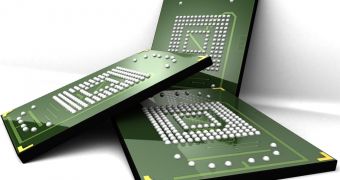There were hints that the NAND Flash chip market was finally settling down, but now we have something more or less concrete to go on, courtesy of a certain news and rumor site.
As people may or may not have guessed, Digitimes is the one providing an update on the state of the NAND Flash chip segment.
Considering just how many of the facilities responsible for the world’s flash supply are in Taiwan, this is not a shock at all, really.
Previously, when we picked up the subject, we said that Samsung Changed MicroSD card plans because of the dropping price.
More recently, OCZ said that 25nm pricing had pretty much reached the bottom.
That definitely contributed to what we can say today, but the good news, for companies anyway, is primarily attributed to something else.
Long story short, makers of NAND Flash semiconductors have been manufacturing reduced quantities, by scaling down their production in June. Some even made more DRAM than usual, with the equipment and manpower diverted away from flash technology.
This state of affairs will doubtlessly continue in the near future, at least until upcoming shipments of smartphones, tablets and ultrabooks.
The turning point, if it comes at all, will probably be next month (August, 2012). If the aforementioned consumer electronics and PCs sell well, NAND manufacturers may consider restoring production and/or resuming expansion at their 12-inch fabs.
Flash drives and external SSDs will play a part as well, but not as much. They had their spotlight when the USB 3.0 and SATA III / 6.0 Gbps interface appeared, but there isn't anything to push them this time. Windows 8 will encourage laptop and tablet sales though. Coupled with storage price cuts and growing interest in smartphones/slates, there should be enough of an incentive for a rise in SSD manufacturing on that front.

 14 DAY TRIAL //
14 DAY TRIAL //